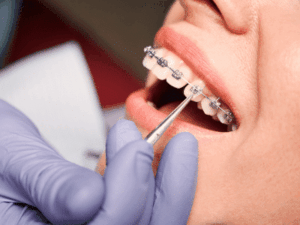
Boost Your Oral Health with These Essential Nutrients
We often hear about the importance of vitamins and minerals for our overall health, but did you know they’re also critical for maintaining a healthy mouth? Ensuring you get enough of the right nutrients can make a significant difference in keeping your teeth and gums in top shape. Here’s a breakdown of the vitamins and minerals you need

Items You Should Have at Home in Case of an Orthodontic Emergency
Our teeth do so much for us on a daily basis. While most of the time they are strong and reliable, accidents do happen from time to time. When emergencies do happen, it is crucial that you have some important items on hand so that you can handle them to the best of your ability. Keep reading for

What Braces Feel Like in the First Few Days
Getting metal braces is a big step toward a straighter, more beautiful smile! However, the first few days can feel quite different as your mouth adjusts to this new change. You’ll likely experience a mix of excitement, curiosity, and a little discomfort. Rest assured, these feelings are perfectly normal and temporary. In this blog, Dr. Amir Davoody, Dr.
Ready for Braces? Here’s What Happens at Every Stage of Treatment
Braces are a trusted and effective solution for achieving a straighter smile, but many people delay treatment simply because they are unsure of what to expect. Dr. Amir Davoody, Dr. Rana Mehr, and Dr. Panagiotis Kyteas at Greater Houston Orthodontics walks you through the step-by-step process so you can feel confident in making the right decision for your
How to Teach Children to Brush Their Teeth
Oral hygiene is an important part of our health. Good oral hygiene should be instilled in children from a young age. Parents have a very important job to do when teaching children about how to properly brush their teeth. It is crucial that parents help their children to form healthy habits for their teeth while also making it
Statistics about Smiling and Happiness
Smiling is an important part of your health and happiness! Your dentist’s office (and your orthodontist’s) are committed to keeping your smile healthy and happy for years to come. While smiling can seem very superficial initially, a beautiful smile can actually have a positive impact on your overall well-being in addition to making you feel great. There has
